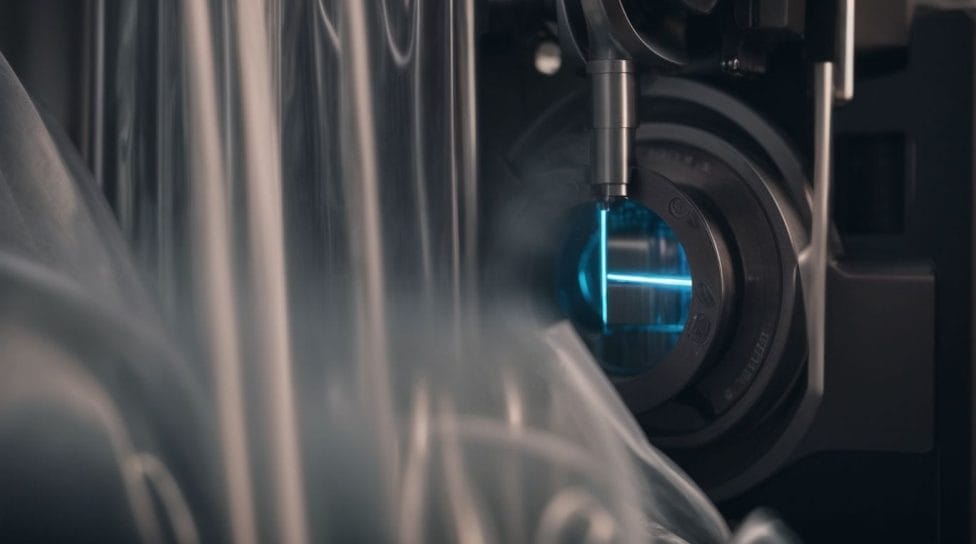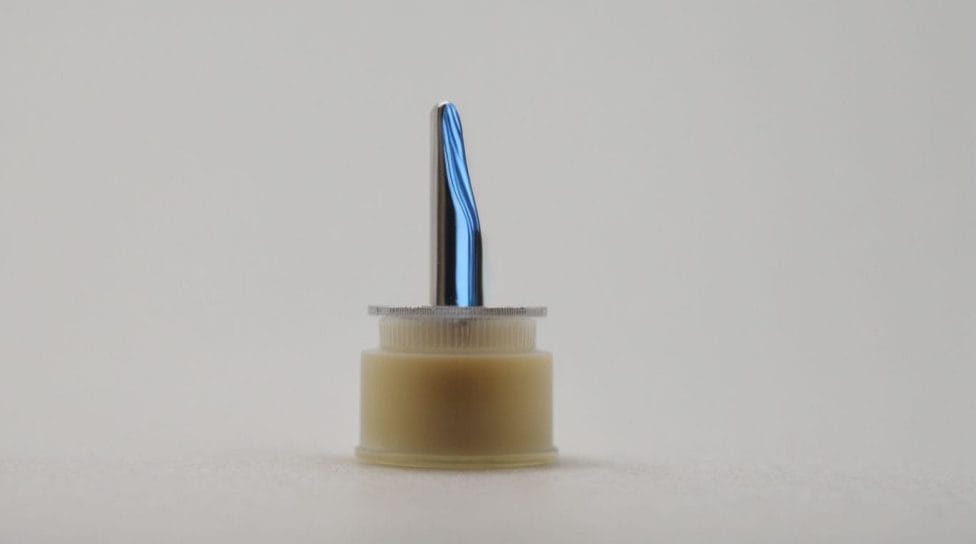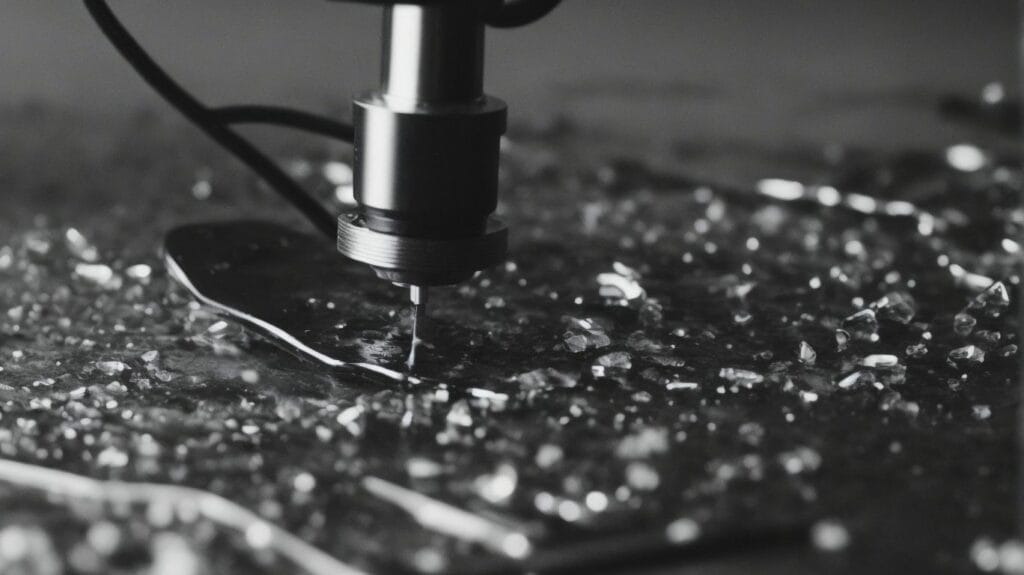A clogged 3D printer nozzle can be a frustrating obstacle that hinders your printing projects. Understanding why a nozzle gets clogged is essential to prevent and address this issue effectively.
There are several reasons why a 3D printer nozzle may become clogged:
- Buildup of Filament Residue: Over time, filament residue can accumulate in the nozzle, obstructing the smooth flow of filament.
- Poor Filament Quality: Inferior quality filaments may contain impurities or inconsistencies that can cause clogs in the nozzle.
- Incorrect Printing Temperature: Using the wrong temperature settings can lead to the filament not melting properly, causing blockages in the nozzle.
Identifying the signs of a clogged nozzle is vital for timely intervention. Some common indications include under-extrusion or no filament extrusion, erratic extrusion, and poor print quality.
Fortunately, there are methods to unclog a 3D printer nozzle:
- Manual Cleaning Method: This involves removing the nozzle and physically cleaning it using tools like needles or wires.
- Using a Cleaning Filament: A cleaning filament specifically designed for nozzle cleaning can help dissolve residue and debris.
- Cold Pulling Technique: Also known as “atomic” or “cold” pull, this method involves using filament to pull out clogs by inserting them and then cooling them before being pulled out.
Prevention is better than cure, and there are measures you can take to prevent nozzle clogs:
- Proper Filament Storage: Storing filament in a dry and airtight container can help maintain its integrity and minimize the chances of debris entering the nozzle.
- Regular Maintenance: Regularly inspecting and cleaning the nozzle and keeping the printer in good condition can prevent clogs.
- Temperature and Speed Adjustments: Adjusting the printing temperature and speed parameters to match the filament’s requirements can prevent nozzle clogs caused by improper melting or excessive speed.
By understanding the causes of nozzle clogs, knowing how to unclog them, and taking preventive measures, you can ensure smooth and successful 3D printing projects.
Key takeaway:
- Buildup of filament residue: One common reason for a clogged 3D printer nozzle is the buildup of filament residue. It is important to clean the nozzle regularly to prevent clogs.
- Poor filament quality: Using low-quality or contaminated filament can lead to clogs. Always use high-quality filament from reputable sources to avoid nozzle clogging.
- Incorrect printing temperature: If the printer’s temperature is set too low, the filament might not melt properly and can cause clogging. Ensure the nozzle is heated to the correct temperature for the filament.
Why Would a 3D Printer Nozzle Get Clogged?

Photo Credits: Futureproof3D.Com by Kenneth Rivera
3D printer nozzles getting clogged can be a frustrating roadblock in your printing journey. But why does it happen? In this section, we’ll uncover the reasons behind this nozzle-clogging phenomenon. From the buildup of filament residue to poor filament quality and incorrect printing temperatures, we’ll explore the culprits that can lead to this annoying issue. Get ready to dive into the nitty-gritty and gain a deeper understanding of why a 3D printer nozzle would get clogged.
The buildup of Filament Residue
A clogged 3D printer nozzle can occur due to a buildup of filament residue, affecting the print quality and causing printing issues.
- To prevent any buildup of filament residue, it is essential to clean the nozzle regularly.
- Melting the residue can be achieved by heating the nozzle to the recommended temperature.
- In case of stubborn residue, using a cleaning filament can effectively remove it.
- The cold pulling technique involves cooling the nozzle and removing any residue.
- Proper filament storage is crucial to avoid moisture absorption and the formation of the residue.
- It is important to maintain the printer regularly by checking for nozzle blockages and cleaning it if necessary.
- Optimizing print quality and preventing residue buildup can be achieved by making temperature and speed adjustments.
Poor Filament Quality
Poor filament quality can result in clogs in a 3D printer nozzle, which can cause disruptions in the printing process. Therefore, it is crucial to opt for a high-quality filament that ensures smooth and reliable printing. One of the consequences of using poor filament is inconsistent diameter, which can lead to extrusion issues. Additionally, the filament may contain excessive moisture, resulting in clogs due to water absorption. Moreover, poor filament quality may contain impurities such as dust or debris that can cause blockages in the nozzle. When evaluating filament quality, it is important to consider factors such as diameter consistency, moisture resistance, and purity. Look for filament with a consistent diameter to ensure proper extrusion. Choose a filament with good moisture resistance to prevent clogs caused by water absorption. Lastly, select filaments free from impurities like dust or debris to avoid blockages. To mitigate the problems associated with poor filament quality, it is recommended to purchase from reputable manufacturers and store the filament in a dry environment. Regular inspection and cleaning of the printer nozzle are essential preventative measures against clogs resulting from poor filament quality.
Incorrect Printing Temperature
Maintaining the correct printing temperature is essential to prevent nozzle clogs in a 3D printer. It is crucial to avoid incorrect printing temperatures as they can affect the nozzle. Here is a table that outlines the impact of improper temperature settings:
| Temperature Range | Effect on Nozzle |
|---|---|
| Too High | Excessive heat can cause filaments to melt too quickly, leading to clogs and uneven prints. |
| Too Low | Inadequate heat can cause filaments to flow poorly, resulting in clogs and incomplete prints. |
To avoid nozzle clogs due to incorrect temperature, it is crucial to follow the recommended temperature settings provided by the filament manufacturer. Additionally, experimenting with slight adjustments can help identify the optimal temperature for your specific printer and filament. Regular monitoring and calibration of the printing temperature are necessary to ensure consistency and prevent clogs.
Signs of a Clogged 3D Printer Nozzle

Photo Credits: Futureproof3D.Com by Peter Smith
Recognizing the signs of a clogged 3D printer nozzle is crucial in maintaining the quality and performance of your printer.
- Poor Extrusion: Uneven or weak filament flow is one of the signs of a clogged 3D printer nozzle that you should be aware of.
- Under-Extrusion: If your print shows gaps or thin layers, it may indicate a partially or fully blocked nozzle in your 3D printer.
- Stringing or Oozing: Excessive stringing or oozing of filament between print features can suggest the presence of a clog in your 3D printer nozzle.
- Nozzle Clicking: Intermittent clicking sounds from the nozzle during printing are signs that there might be an obstruction in the nozzle of your 3D printer.
- Print Failure: Consistently failed prints, especially after previously successful ones, may result from a clogged 3D printer nozzle.
- Burnt Filament Odor: A burning smell when printing can indicate that the filament is getting stuck in the nozzle of your 3D printer.
Methods to Unclog a 3D Printer Nozzle

Photo Credits: Futureproof3D.Com by Keith Carter
A clogged nozzle can be a frustrating obstacle when using a 3D printer. Luckily, there are several effective methods to unclog it. In this section, we’ll explore three techniques that can get your 3D printer nozzle up and running smoothly again. From manually cleaning the nozzle to using a specialized cleaning filament and even trying the cold pulling technique, we’ve covered you with practical solutions to tackle this common issue. Say goodbye to clogs and get back to printing with ease!
Manual Cleaning Method
- To manually clean a clogged 3D printer nozzle, follow these steps.
- Heat the nozzle: Preheat the printer to the printing temperature of the filament that caused the clog.
- Remove the filament: Once heated, remove the filament from the extruder by gently pulling it out.
- Disassemble the nozzle: If possible, disassemble the nozzle to access the clogged area more effectively.
- Clean with a needle: Use a fine or nozzle cleaning tool to remove debris or filament residue from the nozzle opening.
- Soak in a cleaning solution: For stubborn clogs, soak the nozzle in a cleaning solution specifically designed for 3D printing equipment.
- Reassemble and test: After cleaning, reassemble the nozzle and run a test print to ensure the clog has been cleared.
Using a Cleaning Filament
Cleaning filament is a crucial and effective method to unclog a 3D printer nozzle. If you encounter any clogging issues, follow these steps:
- Start by heating the 3D printer to the recommended temperature specifically designed for the filament you are using.
- Just like you would with regular filament, insert the cleaning filament into the extruder.
- Allow the cleaning filament to run through the nozzle for a few minutes. This will effectively dissolve any stubborn residue that may be causing the clog.
- Apply steady pressure to push the cleaning filament through until it comes out clean.
- Once the cleaning process is completed, remove the cleaning filament and replace it with the regular filament to resume your printing tasks.
By consistently using a cleaning filament, you can prevent nozzle clogs and ensure your printer maintains optimal performance.
Cold Pulling Technique
The cold pulling technique, also known as the cold pull method, is an effective way to unclog a 3D printer nozzle. Here are the steps you can follow to perform this technique successfully:
First, heat the nozzle to the normal printing temperature.
Next, prepare a piece of cleaning or nylon filament for the process.
Now, insert the filament into the nozzle until it reaches the clog.
Allow the filament to cool down completely, ensuring that it solidifies.
Gently pull the filament out of the nozzle, firmly and evenly applying force.
By doing so, the clog should be pulled out along with the filament, effectively clearing the nozzle. If you are wondering how to unclog a 3D printer nozzle, check out this helpful guide on how to unclog a 3D printer nozzle.
If, by any chance, the clog remains, you can repeat the process until it is fully cleared.
It’s crucial to note that the cold-pulling technique should only be applied to PLA or similar materials. Utilizing this method on other filament types may result in nozzle damage and should be avoided.
The cold pulling technique, originally devised by a group of frustrated 3D printing enthusiasts, has become a popular and reliable method for nozzle maintenance. Through experimentation and trial and error, they discovered that cooling down the filament before extraction was the most successful approach to resolving nozzle clogs. As a result, the cold-pulling technique gained widespread adoption within the 3D printing community.
Tips to Prevent Nozzle Clogs

Photo Credits: Futureproof3D.Com by Tyler Allen
Are you tired of dealing with clogged 3D printer nozzles? Look no further! In this section, we’ll uncover some game-changing tips to prevent those pesky nozzle clogs. From proper filament storage to regular maintenance and temperature and speed adjustments, we’ve got you covered. Say goodbye to frustrating print failures and hello to smooth and uninterrupted 3D printing. Get ready to unleash the full potential of your 3D printer with these essential prevention tips.
Proper Filament Storage
Proper filament storage is vital for avoiding clogs in a 3D printer nozzle. Here are some valuable tips:
- Maintain proper filament storage in airtight containers or resealable bags to shield it from moisture and humidity.
- Ensure the filament is stored in a cool, dry location, away from direct sunlight.
- To absorb any moisture that may be present, consider using desiccant packets or silica gel.
- Avoid subjecting the filament to extreme temperature fluctuations.
Once, I made the mistake of improperly storing my filament, which exposed it to high humidity. Consequently, the filament absorbed moisture and caused frequent clogs in my 3D printer nozzle. I learned an important lesson – proper filament storage is crucial for smooth printing!
Regular Maintenance
Regular maintenance is crucial to prevent clogs in a 3D printer nozzle. Here are some steps you can take to ensure regular maintenance and keep your printer running smoothly:
- Regularly inspect the nozzle for any signs of filament buildup or debris as part of your regular maintenance routine.
- Use a nozzle cleaning kit during your regular maintenance to effectively remove any residue blocking the nozzle.
- As part of regular maintenance, keep your printer’s firmware and software up to date to ensure optimal performance.
- Include the cleaning of the print bed as part of your regular maintenance tasks and remove any excess filament that may have fallen during printing.
- Check and clean the cooling fans regularly to prevent overheating, an important aspect of regular maintenance.
- Perform regular calibration tests as part of your regular maintenance routine to ensure accurate printing results.
By following these regular maintenance steps, you can minimize the risk of nozzle clogs and maintain the efficiency of your 3D printer.
Temperature and Speed Adjustments
- Temperature and speed adjustments are crucial in preventing clogs in 3D printer nozzles. To achieve optimal flow, it is important to start with proper temperature settings. Different filaments require specific temperatures. Therefore, adjust the printing temperature according to the guidelines provided by the filament manufacturer.
- To prevent clogs, experiment with different printing speeds. Lower speeds allow the filament to melt properly and adhere to the bed, reducing the risk of clogs.
- To ensure adequate cooling, it is important to keep an eye on the cooling fan. Adjust its speed accordingly to allow the printed layers to cool down effectively. Be cautious, as excessive cooling can cause warping, while inadequate cooling can result in clogs.
- Maintain the printer regularly to prevent any obstructions or buildups affecting temperature and speed settings. Regular cleaning and maintenance are essential.
- Consider utilizing a filament dryer to eliminate excess moisture. Wet filament can lead to blockages, so using a filament dryer can be beneficial.
By appropriately adjusting temperature and speed settings, as well as maintaining a clean printing environment, you can minimize the likelihood of 3D printer nozzle clogs and ensure smoother printing processes.
Some Facts About How To Unclog 3D Printer Nozzle:
- ✅ Clogged nozzles are a common issue with 3D printers, often leading to wasted filament and problems like uneven extrusion. (Source: makeuseof.com)
- ✅ Several factors can cause clogs in 3D printer nozzles, including cold pulls, wrong material choice, dirty nozzle, wrong extruding temperature, poorly calibrated extruder, and nozzle diameter too small. (Source: makeuseof.com)
- ✅ Tools such as tweezers, pliers or cutting nippers, a piece of cloth, and acetone solvent are commonly used to unclog a 3D printer nozzle. (Source: makeuseof.com)
- ✅ If the clog is not visible, a sharp object like a needle or small screwdriver can clear the nozzle. (Source: makeuseof.com)
- ✅ If all else fails, using a different type of filament with a broader diameter can often unblock a clogged nozzle. (Source: makeuseof.com)


